i8 Gallery in Reykjavík celebrates its 20th anniversary this year. It recently announced that a new artist had joined their list; Arna Óttarsdóttir (b. 1986), who is now the youngest artist represented by the gallery. Arna’s first solo-exhibition at the gallery was opened on November 5th displaying 9 tapestries that she created after having taught herself the art of weaving. The oldest tapestry is from 2011 but the majority of the works was created specially for the exhibition. The motifs come from her sketchbooks and are often sketches that were not really meant to stand as independent artworks. She uses Icelandic wool combined with Swedish cotton and occasionally blends it with colourful polyester and other synthetic materials.
I met Arna over a cup of tea in her home where she also has her studio. The house is located in Reykjavík’s city center and the apartment is warm and charming with plants and artworks looming in every corner. Occupying a large table in the living room is a spread-out 3000 piece puzzle that Arna works on in her spare time. The puzzle gradually displays more and more of Picasso’s black and white oil painting Guernica from 1937.
I asked Arna about her working methods, inspirations and her recent collaboration with a commercial gallery.
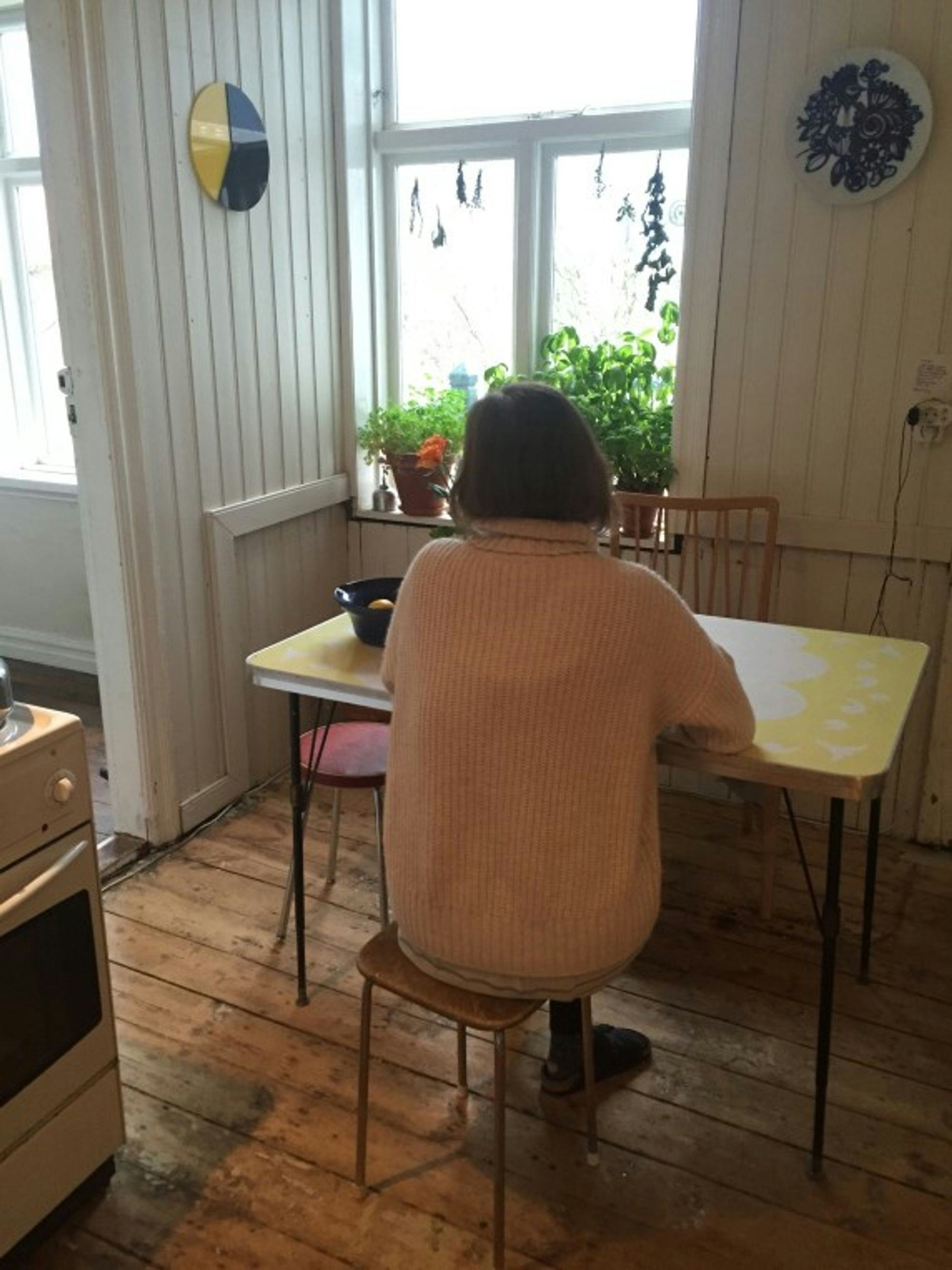
Arna Óttarsdóttir
What are your working methods in the tapestry? Do you use a loom or is there another technique behind the works?
Two of the works were made using a loom; the pink long one titled 3 Weeks and another one called Green Slab. For the other works I used a wooden frame where you weave over and under a warp, starting from the bottom and working your way up. The loom is more of a production equipment but the frame works better when you’re working on tapestry because you always see the image. When I first started weaving I used to put the image into a grid and counted and measured where I was at each moment. For the new pieces I used a projector and drew the image on the warp. That way it all goes much faster.
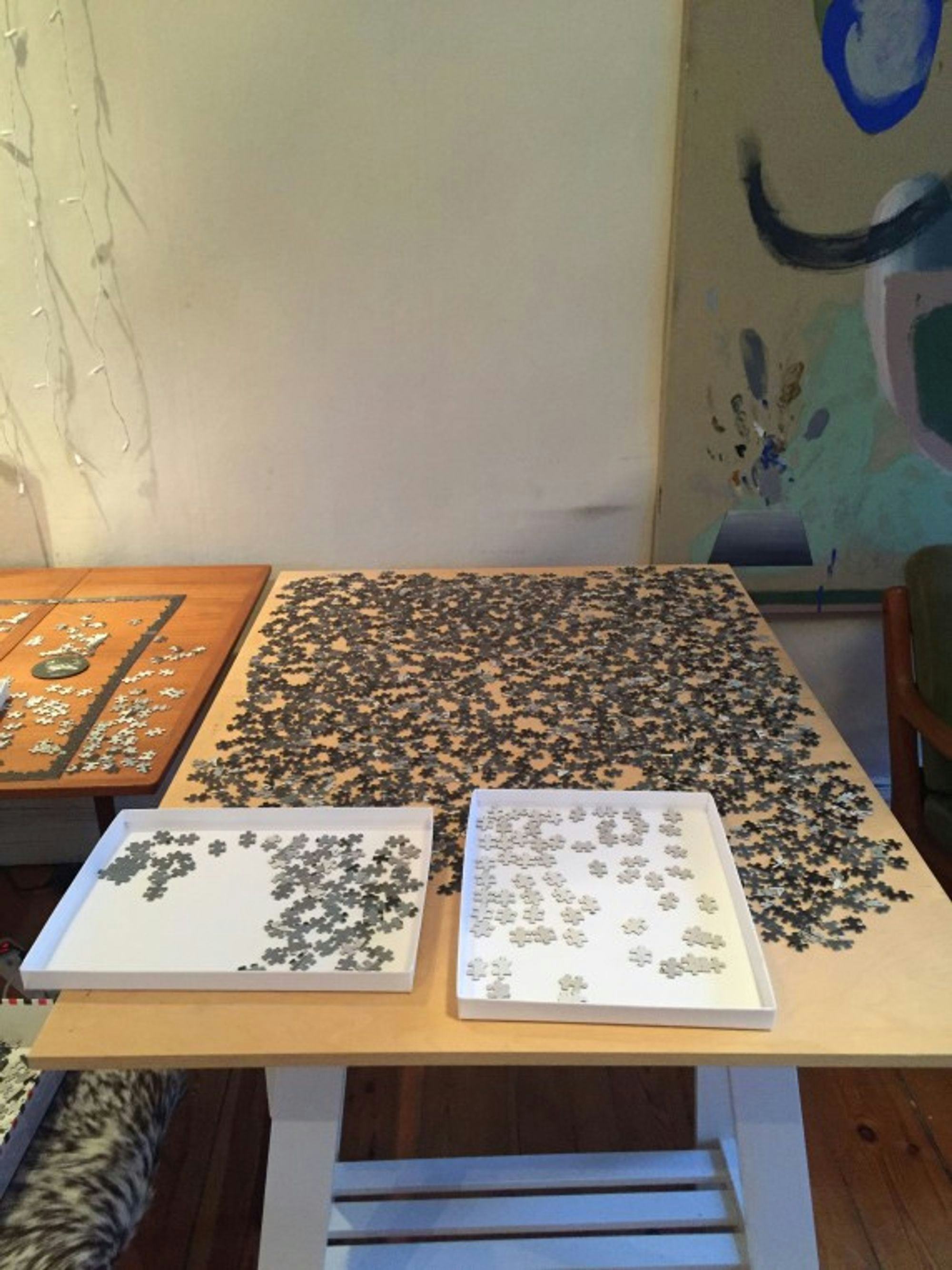
Arna Óttarsdóttir
It depends on how complex they are. The large works took 4-6 weeks and the smaller ones about 3 weeks. I spent half a year working on Girl Blanket because it is so complex. It was not constant work for half a year but still, it took extremely long. There is not always correlation between the size of the works and the time it takes to make them. All the details matter as well.
Do you have some connection to the tradition of weaving through your family or from your childhood?
My mother used to learn textile at the Icelandic College of Art and Crafts so there was always a loom in my home when I was little. But I don’t remember her using it much. It just stood there in the living room and I didn’t try it until I started weaving myself a few years ago. I haven’t specifically studied the history of weaving but of course I’ve looked into what has been done in the past. That comes naturally and you start noticing textile more. I bought a book about Ásgerður Búadóttir but then I find the works of Júlíana Sveinsdóttir more interesting. I search the Internet a lot and get inspired by blogs that feature tapestry and textile.

Arna Óttarsdóttir
Arna pulls out from a drawer the first tapestry she ever made; an orange smiley-face on a white background, a bit in contrast with the works in the exhibition, at least when it comes to colour.
All the pieces in the exhibition feature a similar pale colour-palette – is there a reason for that?
The colours I use in this exhibition are colours that are not aggressive. That’s something I like. They are simply colours that I find beautiful. I am not thinking about the meaning of them. Some people find them feminine. That’s not how I see them but I still think that association is fine. For me it’s more the feeling that you get a break –they don’t demand anything much from you.
For the artworks I mostly use Icelandic wool that I dye in my kitchen at home using a Swedish wool-colouring that my mother used to have from her school days. It comes as a powder that you mix with water. You have to boil the water and do all sorts of things with the wool. Then you use acid and heat to make the colour stick to the wool. So there is a bit of a bustle around it. I once got a spinning wheel for my birthday and made some attempts to also spin the wool myself but that was too much, on top of everything else, so I stopped that.
Tapestry is not for everyone but if you relate to it I think you should stick to it and try a bit more.
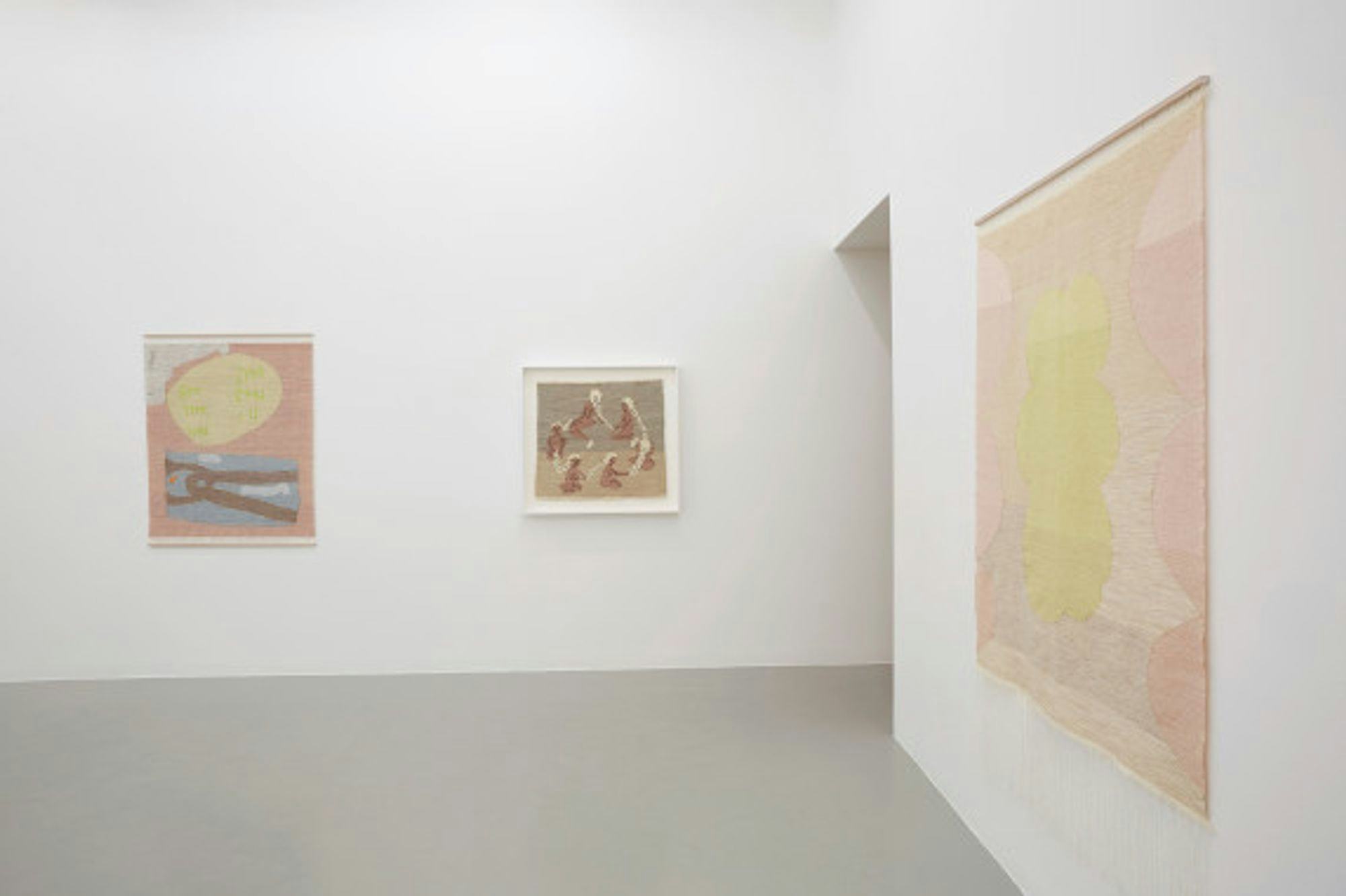
Arna Óttarsdóttir. i8 Gallery, installation view.
Over the past years you have done works in different media, e.g. sculpture and photography, and now you do tapestry. Is there a specific medium that you see as your medium, or is it variable?
Right now I feel that tapestry is my medium. It has been really interesting to only work on tapestry for the last year now and I really learned a lot. Now there are so many things related to tapestry that I want to try and experiment with. However, tapestry is very time-consuming and slow. I will probably keep on doing works in other medium but now I am in my tapestry-period. At the end of the day, my interest lies in various fields. I don’t think I’ve stopped doing anything. At the Art Academy I used to draw, but I haven’t done a lot of drawing since I graduated. You just somehow thread your way on.
The motifs in your tapestries are all from your sketchbooks and they all feel quite every-day. Where do you find your inspiration?
The everyday inspires me and also the insignificant things in life, as can for example be seen in a piece I once made out of crumbs from my kitchen table, things that you wouldn’t otherwise contemplate. The drawings that I used for the tapestries are either drawings that I don’t find beautiful or sketches that were never meant to stand as artworks alone. They were meant to be developed further but here I take them and use them exactly as they are. That was sort of the idea behind the works but then I think that the pieces are also something completely different. They are not necessarily a clear image of that idea.

Arna Óttardóttir
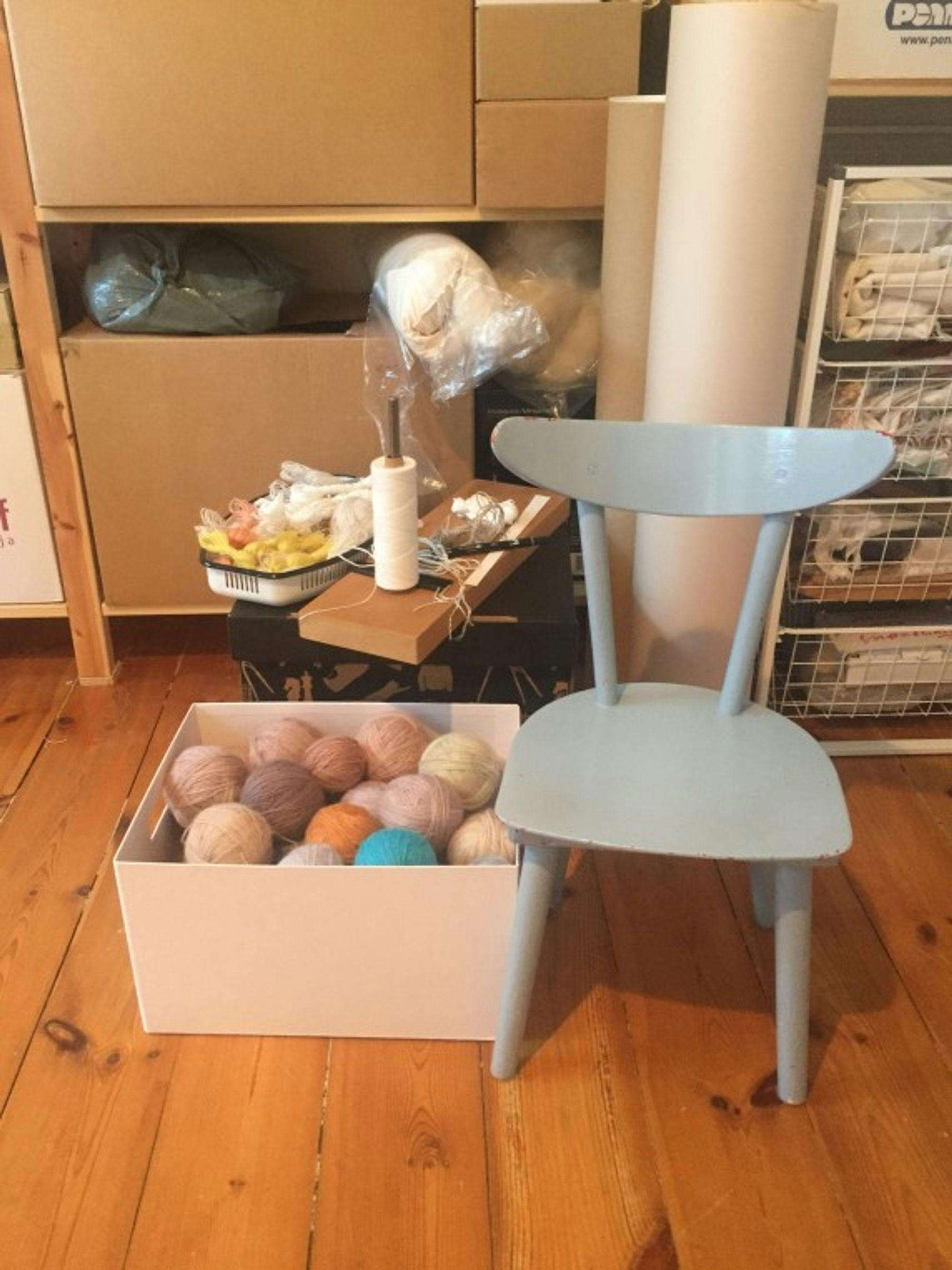
Arna Óttardóttir
Of course it only recently started but I’m very happy about it. It is really good for me because I’m not a famous artist. It means a lot for me. I have sold works before but not to any extent. It’s nice to not have to think about that myself. At least this fits me very well.
What’s next up on your agenda?
Actually, I have nothing scheduled. All my focus the last months has gone into this exhibition, so the next steps are undecided.

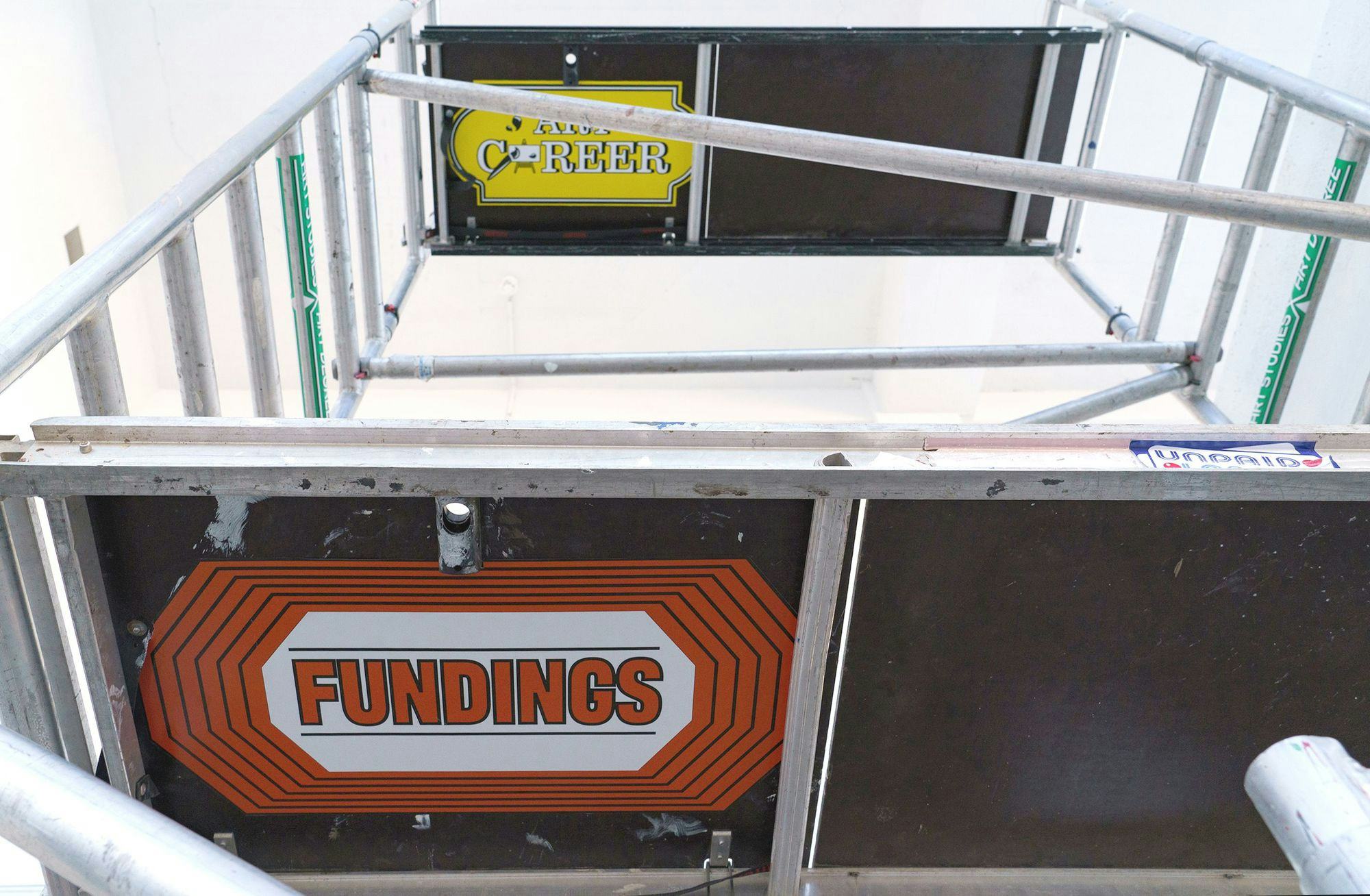
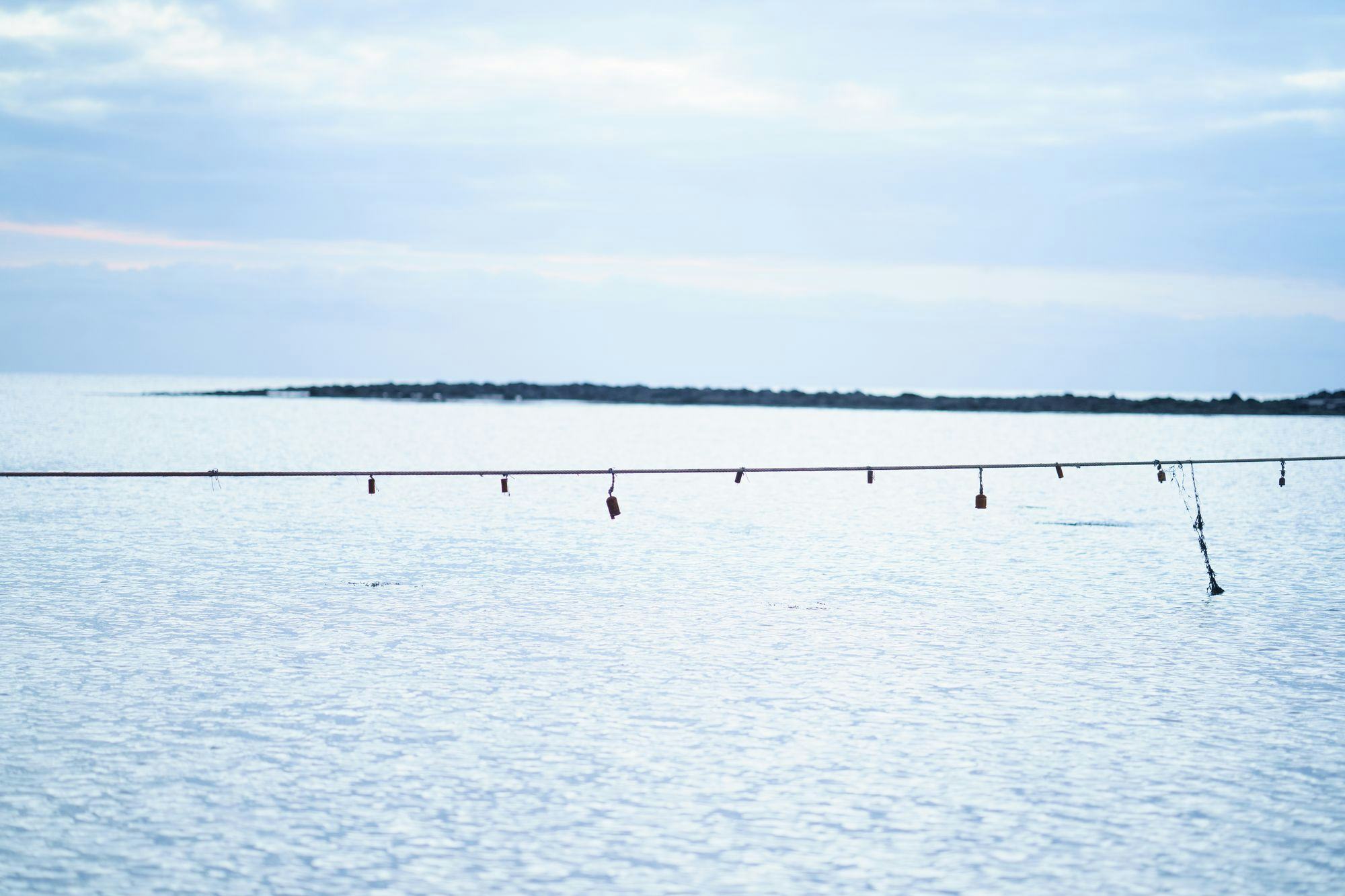
-icelandic-pavilion-2000x2667.jpg&w=2048&q=80)

